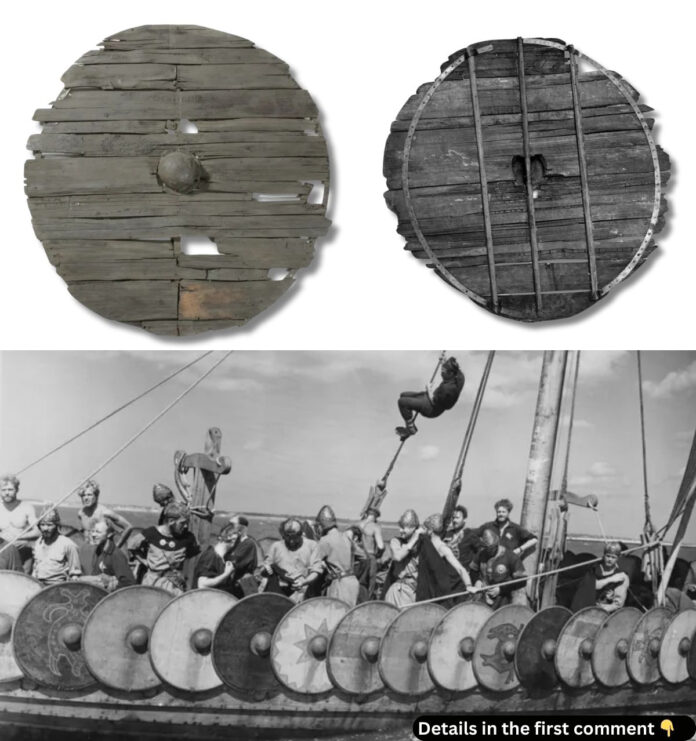The discovery of the Gokstad ship in 1880 unearthed not just a Viking vessel but a treasure trove of insights into their culture and warfare. Among its artifacts, 64 shields once thought to be mere ceremonial decorations have revealed a deeper story—one of craftsmanship, adaptability, and battle-readiness. Recent studies challenge long-held beliefs, shedding new light on the dual role these shields played in the Viking Age.
The Gokstad Ship Discovery
The Gokstad ship burial dates back to around 900 CE, likely housing the remains of a Viking king or chieftain. Measuring 23.8 meters in length, the vessel showcased advanced shipbuilding techniques, designed for both sea voyages and ceremonial grandeur. Along the top edge of its hull, 64 wooden shields were mounted, painted in alternating black and yellow crescents. For over a century, these shields were thought to be purely decorative—a means to impress observers and symbolize the king’s martial prowess in the afterlife. Yet, the ship’s historical and cultural significance has prompted modern scholars to reexamine the purpose of these enigmatic artifacts.
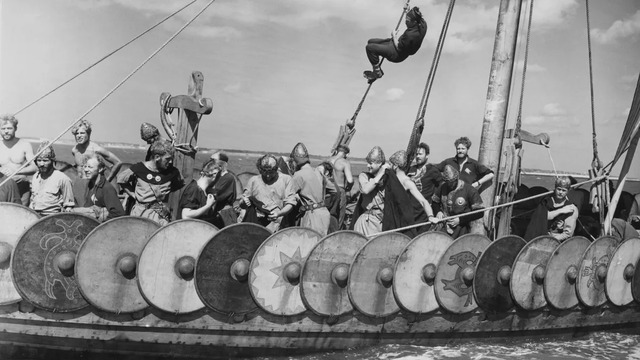
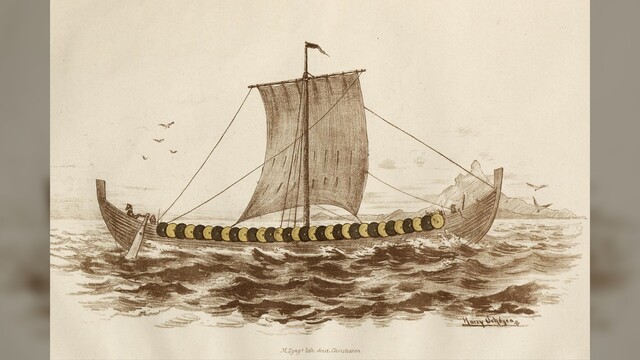
Craftsmanship of the Gokstad Shields
Recent analyses reveal the remarkable craftsmanship behind the Gokstad shields. Made from tapered wooden planks, each shield featured a central iron boss to protect the wielder’s hand and a wooden handle for maneuverability. The shields were lightweight, an essential feature for the quick movements required in Viking combat.
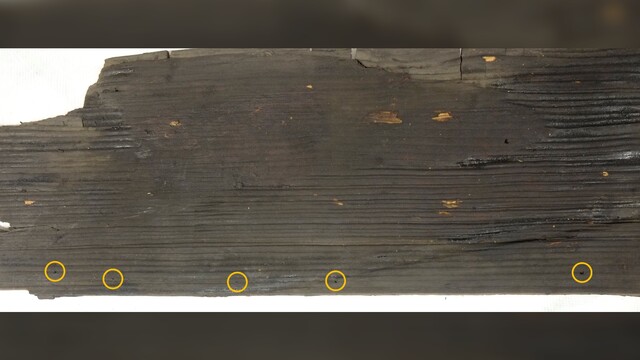
One of the most compelling discoveries is the evidence of rawhide reinforcement. Rows of perforations along the rims suggest that animal hide was stitched onto the shields, enhancing their durability against blows. Though the rawhide itself has not survived, indirect evidence, such as organic fragments and sloped rims designed to accommodate this layer, supports the theory. This innovation highlights the Vikings’ ability to balance practicality with aesthetic appeal, as the shields’ crescent designs likely served a psychological purpose, intimidating enemies in battle.
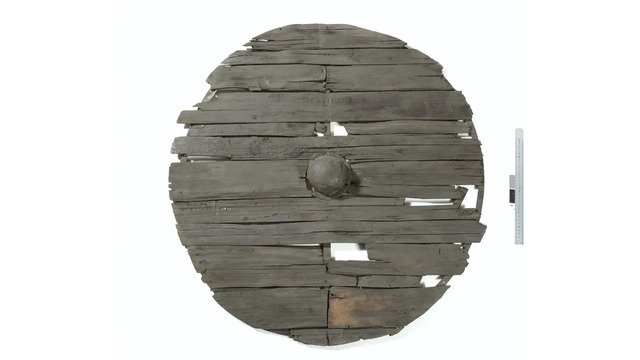
Video
Curious about what real Viking shields looked like? Watch the video to explore the design, materials, and history behind these iconic symbols of Viking warfare!
Shields in Viking Warfare
Viking shields were indispensable in both offensive and defensive strategies. On the battlefield, warriors used them to form “shield walls,” a formation that provided collective protection and a platform for launching counterattacks. At sea, shields mounted along ship hulls offered an additional layer of defense against projectiles during raids or skirmishes.
The Gokstad shields’ design also suggests adaptability. Easily detachable from the ship, they could be quickly deployed for hand-to-hand combat on land. Although direct evidence of their use in battle, such as weapon marks, is limited, some shield bosses exhibit irregular notches, hinting at their exposure to combat scenarios.
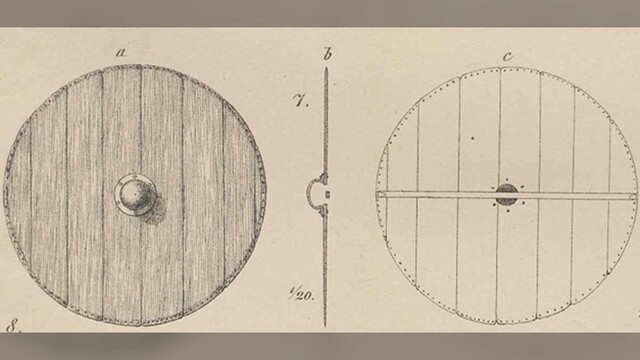
The Debate: Ceremonial vs. Functional
The dual nature of the Gokstad shields has sparked lively debates among historians. Early interpretations leaned heavily toward a ceremonial role, emphasizing the shields’ placement on the ship and their vibrant colors. However, the rawhide reinforcement and lightweight construction suggest they were more than decorative.
The most plausible conclusion is that the shields served a dual purpose. While their ceremonial arrangement on the ship symbolized power and unity, their practical design ensured they were ready for combat when needed. This duality aligns with Viking cultural practices, where functional objects often carried symbolic significance.
The Gokstad Ship’s Cultural Significance
The Gokstad ship reflects the centrality of maritime culture in Viking society. Ships were more than mere vessels; they were emblems of exploration, trade, and conquest. In the context of burial practices, they symbolized the deceased’s journey to the afterlife, equipped with tools to ensure their success in the next world.
The inclusion of shields on the Gokstad ship speaks to the importance of warfare in Viking identity. Beyond their immediate utility, the shields represented the valor and status of the ship’s owner, encapsulating the warrior ethos that defined Viking culture.
Future Research and Implications
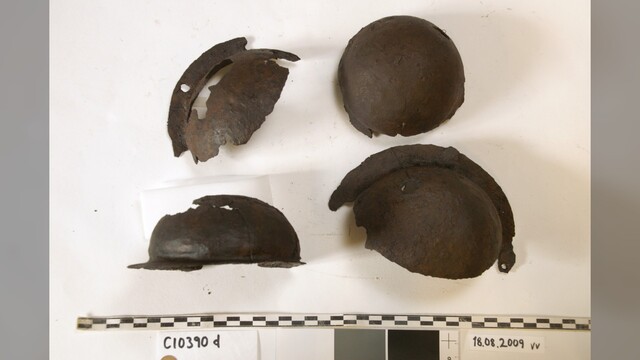
The recent findings about the Gokstad shields open the door to further interdisciplinary research. By combining material science, archaeology, and historical analysis, scholars can gain deeper insights into Viking warfare and daily life. Future studies could focus on conducting wear analysis on shield bosses to identify patterns of use, as well as reconstructing rawhide layers to test their effectiveness in combat.
Additionally, the Gokstad shields highlight the broader adaptability and innovation of Viking society. From shipbuilding to weaponry, their ability to integrate functionality with symbolism set them apart as a culture deeply attuned to both practicality and artistic expression.
Video
Explore the evolution of the Viking longship in Before the Vikings – watch the video to trace its development from 10,000 BC to 750 AD and discover how these ships shaped Viking exploration!
Conclusion
The Gokstad shields, long considered mere ceremonial artifacts, have revealed themselves to be multifaceted tools of Viking life. Combining craftsmanship, utility, and symbolism, they embody the dual nature of Viking culture—a culture that valued both martial prowess and artistic ingenuity. As further research unfolds, these shields continue to enrich our understanding of the Vikings, offering a glimpse into the lives of those who once roamed the seas and shaped history with their indomitable spirit. Through artifacts like the Gokstad shields, the legacy of the Vikings endures, reminding us of a time when even the tools of battle carried stories of innovation and identity.
